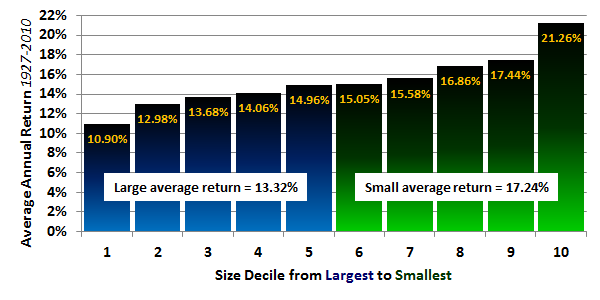The 'size' factor has been a popular, longstanding risk premia, first identified by Rolf Banz in 1981. The factor is simple to follow: mid- and small-cap stocks (<$10B market cap) generally outperform large-cap stocks (>$10B market cap). The thesis seems to be borne out by empirical evidence:

Or does it? There have been criticism of the size factor in the past, but research from AQR shows convincingly the real dynamic at play: Quality (consistency of earnings, low debt/equity ratio,higher margins, etc.).
AQR provides a lot of evidence that after you adjust for their higher market beta, small-caps stocks do not outperform large-cap stocks. Shown below from monthly regression (1990-2020) on market factor plus lag (to take into account greater illiquidity of small cap stocks):
The smallest stocks have an average beta of 1.35 and negative alpha! No statistically significant SMB premia.
But if you take into account quality (in a separate study)...higher quality small cap stocks do outperforms large cap stocks. Adjust for quality, then you'll reap the size premium.





No comments:
Post a Comment